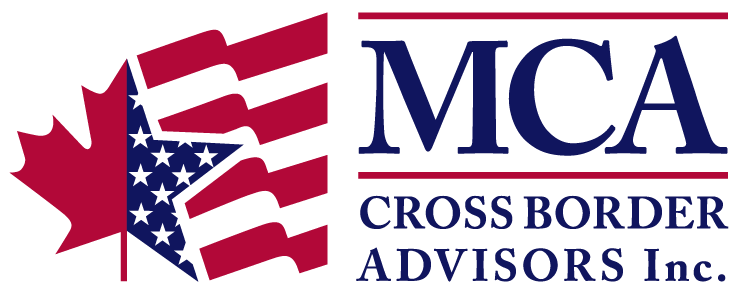Health Savings Accounts: A Powerful U.S. Tax Savings Opportunity
Canadians moving to the U.S. often ask about tax saving opportunities which await them as future U.S. residents. One such opportunity available to U.S. residents that we love explaining due to the powerful tax benefits it provides is the Health Savings Account or “HSA.” This should not be confused with the Canadian Health Spending Account which typically refers to a cafeteria health spending plan offered by Canadian group plans. The U.S. HSA is an individual savings vehicle that offers triple tax savings to eligible accountholders as I explain below.
HSAs can be opened at a variety of U.S. banks and other financial institutions. Being allowed to contribute to one requires being: 1) a U.S. resident; and 2) enrolled in an accompanying High Deductible Health Plan (HDHP).
An HDHP is a U.S. health insurance plan, either group or individual, which meets minimum deductible and maximum out of pocket expense thresholds set by the IRS that are adjusted for inflation annually. In 2024, to be an HDHP, a health plan must have a minimum annual deductible of $1,600 (all figures USD) for individual coverage or $3,200 for family coverage; it also must have a maximum out of pocket expense amount (which includes deductibles and co-payments but not premiums) of $8,050 for individual coverage or $16,100 for family coverage.
Contribution limits to an HSA are also adjusted annually by the IRS for inflation. For the 2024 tax year, the maximum that can be contributed to an HSA is:
- $4,150 for those with single HDHP coverage
- $8,300 for those with family HDHP coverage
Deductible contributions for a given tax year can be made until April 15th of the following year. So, this means that there is a 15 ½ month-long contribution window for a given year, between January 1st of the current year until April 15th of the following year. The deadline then for 2023 HSA contributions is April 15, 2024.
HSA accountholders who turn age 55 or older by December 31 of the year can make an extra “catch-up” contribution of $1,000 (not inflation-adjusted) beyond the limits above. Once someone enrolls in U.S. Medicare, which typically occurs at age 65, they are no longer eligible to contribute to an HSA.
It’s worth noting for spouses that HSAs are always owned individually, not jointly. If both spouses are covered under the same family HDHP, they can each open separate HSAs and contribute separately, but the combined contribution amount can’t exceed the family limit above. Alternatively, only one spouse may choose to open the HSA in their individual name and the family limit above still applies. A planning tip is that if both spouses are age 55 or older, it is best to have two separate HSAs to allow each spouse to separately contribute the extra $1,000 catch-up contribution; if there is only one HSA, then only that spouse is permitted to contribute the extra $1,000.
HSAs feature a powerful triple tax benefit because they allow:
- Tax-deductible contributions
- Tax-free growth
- Tax-free withdrawals
This triple tax benefit should be distinguished from RRSPs in Canada which offer tax deductible contributions, but only tax-deferred growth and fully taxable withdrawals. It should also be distinguished from TFSAs in Canada, which offer tax-free growth and withdrawals, but do not offer tax-deductible contributions. The triple tax benefit that HSAs offer most closely mirrors the relatively new First Home Savings Account (FHSA) in Canada which also offers tax deductibility on the way in and tax-free withdrawals on the way out.
It’s important to note that for HSA withdrawals to be made tax-free, they can only be used to pay for IRS-approved qualifying medical expenses, which are published in IRS Publication 502. A wide variety of medical and dental expenses are eligible, including acupuncture, chiropractic care, laser eye surgery, etc. Some paramedical services, such as massage therapy, require a Letter of Medical Necessity to treat a specific ailment signed by a doctor. U.S. Medicare premiums also count as HSA-eligible expenses except for Supplement Plan premiums which are ineligible. Cross-border clients may be interested to know that eligible medical expenses need not be incurred in the U.S.; Canadian medical expenses also count.
It’s also worth noting that for HSA accountholders who make non-qualified withdrawals, not only does income tax apply on the distribution, but the IRS also adds a hefty 20% penalty on top of the tax liability. Once you turn 65, the penalty goes away.
Contributing to an HSA is a valuable tax savings strategy for U.S. residents. To discuss how you may benefit from an HSA, please schedule a cross-border financial planning consultation.

MCA Cross Border Advisors, Inc. is a registered investment adviser. Information presented is for educational purposes only and does not intend to make an offer or solicitation for the sale or purchase of any specific securities, investments, or investment strategies. The content of this presentation is for information purposes only and should not be construed as investment or financial advice. Investments involve risk and, unless otherwise stated, are not guaranteed. Be sure to first consult with a qualified financial adviser and/or tax professional before implementing any strategy discussed herein. Past performance is not indicative of future performance.
